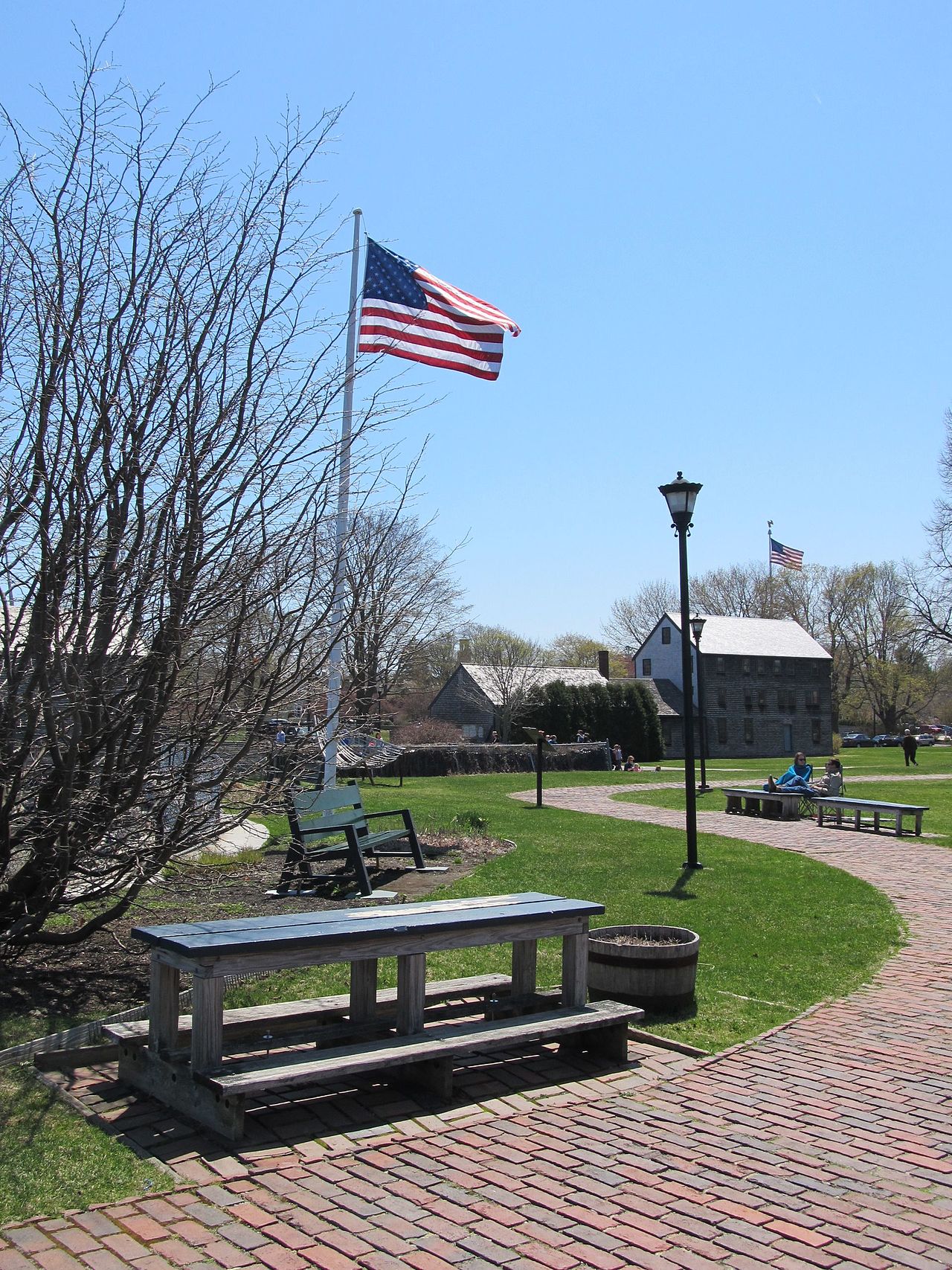Is Prescott Park really suffering from sea level rising? Or is the land actually sinking under its own weight? It’s time for a little critical thinking! The evidence of sea level rising just doesn’t show up as such a big problem elsewhere along the Piscataqua River.
Just look at Pierce Island, or the sub base, or Fort Independence or other places along the River where bedrock is close to the shoreline. Sure, sea level has risen maybe a foot over the past century, but there’s nothing to support the scary forecasts of much higher sea level increases.
But Prescott Park IS sinking. That’s because it is sitting on top of an old dump. Beneath the dump is stream deposits filled with dead trees and plants. And under that are water-saturated marine clays that are inherently unstable and can liquify readily. So, here’s the reason Prescott Park sinks rather than sea level rises. It’s because under the Park is material that rots, compresses and is unstable.
Sea Level Changes for Two Reasons
Sea level is governed by two measures. The first is the most obvious. Is the sea level rising or falling relative to a known AND CONSTANT point of measurement, like the bedrock along the Piscataqua River. This sea level movement is known as eustasy by geologists. The Navy Yard’s submarine pens are a good proxy for this. The second is less obvious, but just as important. Is the land rising or sinking? If the land is not bedrock, it can be seen as potentially moving up or down due to many factors. This movement up or down is known as isostasy by geologists.
Sea level rising can be due the ocean rising OR the ground sinking. If the ground is sinking, you can throw good money after bad trying to fill the “hole.”
Underlying the Park
Relative to the parts of the Piscataqua River that are bedrock, Prescott Park is very unstable. That’s hard to believe for the casual observer. After all, it doesn’t appear to move from one day to the next. But to a geologist or a soils engineer, it does move when you measure it over decades and centuries. From this perspective, it is unstable. And the City proposes buildings and structures that will be around a long time.
Why is it unstable? Turn back the pages of time. Most recently, Prescott Park has been covered with a foot or two of fill to level it out and help landscape it. Beneath that fill, there is debris that was dumped there a hundred years ago. Some of the debris rots away, such as wooden axles, old shoes, old construction material or garbage. All of this material rots or consolidates, compressing over time. As it compresses, it is no longer as high as it once was. To the casual observer, the River’s water level appears to rise relative to the shrinking fill and unstable ground.
What's under Prescott Park?
A former garbage dump, underlain by rotting plants and marshes from an old stream. Beneath this is marine clay, which has a reputation for being unstable and unable to bear concentrated weight well. All contribute to a sinking feeling.
Let’s go back further in time. Before when the neighborhood where Prescott Park now stands all the way back to when there was an estuary, really a marshy stream flowing into the River. By using our imagination, we can see those marshes. Plant life and animals would live and then die along its banks or even in the stream itself. It would flood and carry organic ooze out onto its flood plain. All of these deposits would also settle and rot as time went by. The later unstable fill was placed on top of this consolidating fluvial deposits, causing the land under Prescott Park to sink further.
Beneath the Dump and the Estuary
Let’s go back to just after the glacier left here, perhaps 12,000 years ago. The land, being dynamic, was still weighed down by the weight of the glacial ice and had yet to start its isostatic rebound. That would happen, but just after the glacier melted, sea level flooded the area and the ocean deposited marine clays. This happened all up and down the eastern seaboard. Boston is filled with widespread deposits of marine clays. Marine clays present their own stability challenges. When they get wet, they can expand. When they dry, they can shrink. And if they are subjected to vibrations or repeated loadings, they can lose their internal structural strength, liquify and turn into jelly.
Marine clays have a long history in the construction industry of being unstable. They present special design challenges to engineers who try to build stable foundations.
In Boston, the marine clays became recognized as being so unstable that a new science of soil mechanics was born at the Massachusetts Institute of Technology. Soil scientists there learned how to best build building and structural foundations on such unstable underpinnings. In school, soil scientists learn of “1200 Beacon Street” in Back Bay, where the motel there was limited to only being two stories high and the foundations had to spread the building’s load over a large area, all to keep the building from sinking into the marine clays below. When the Big Dig had to build a tunnel through the marine clays under the train tracks leading to South Station, technology was developed to freeze the soil ahead of the tunnel face, mine it and then freeze again the new face.
Prescott Park has all of these challenges. Yes, the sea level is rising ever-so-slightly (maybe a foot a century) based on bedrock-based meters. But the much larger threat is the unstable soil. This is not the climate-change story we might want it to be. Rather, it represents a significant construction challenge when preserving Strawbery Banke structures, or Prescott Park buildings. The goal has to be to keep the Park and its several improvements from sinking due to consolidating fill, estuarine deposits and the real threat, the underlying marine clays.
Don’t throw good money after bad! Be careful to design the foundations so the ground doesn’t fail under your grand new buildings. Otherwise, these things will crack, crumble and fall apart.
What To Do?
These conditions require wise management. Be careful not to throw good money after bad. Don’t keep adding good fill on top of consolidating material. Design building foundations so the loads per square foot don’t exceed the ability of the fill, deposits and marine clays to carry the design weight. Use pads rather than laid-up stones, pillars or concrete walls. Understand that we are building on an old dump and former stream bed and flood plain with organic-rich deposits. Further, we are building on marine clays that can become liquid and are inherently unstable. Respect those limits and design accordingly. This is not climate change. This is basic geology and soils engineering.
Image credit: By Ynsalh – Own work, CC BY-SA 4.0, https://commons.wikimedia.org/w/index.php?curid=50082386










